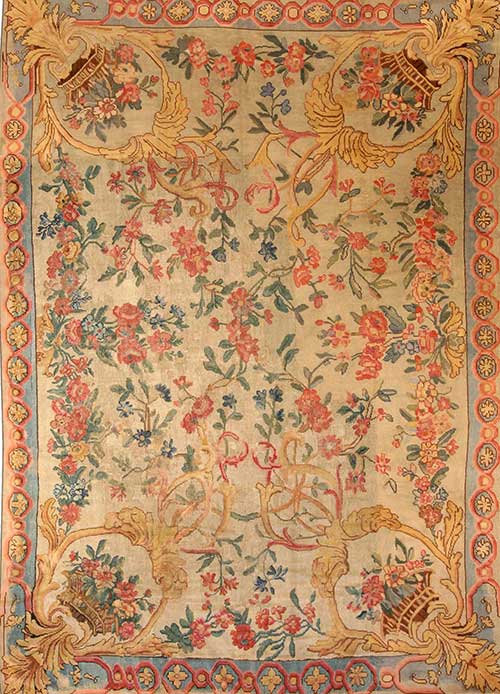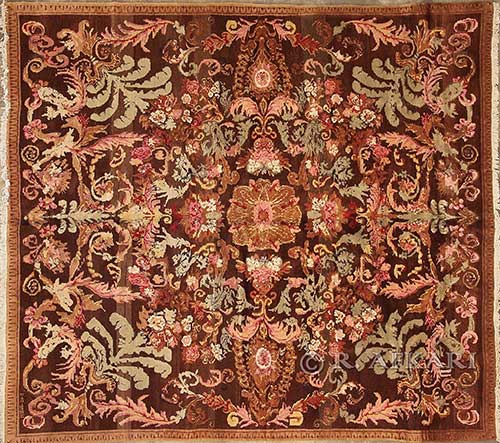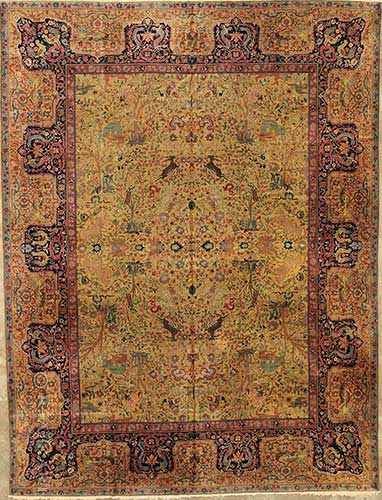Only during the past century have oriental rugs become valued throughout the world as works of art. Collectors often justify their attraction to these handcrafted oriental rugs by explaining that they wish to own a small piece of the rich and colourful history behind this art form. The works have the ability to transform interiors into extraordinary spaces. It remains unknown exactly at what point in time the first carpets were woven, but it is certain that the nomadic tribes of central Asia began the technique of knotting carpets.
The rearing of sheep (the prime source of carpet wool) is a traditional nomad occupation and because people of this period had to endure extreme cold, it is certain that the craft of weaving developed to replace the use of rough animal skins for warmth. For the nomad, rugs were both decorative and practical, serving as floor coverings and wall hangings, but also as curtains, door hangings and saddlebags.
By the early sixteenth century, fabulous carpets could be found in the great courts of Europe, including those of Catherine de’ Medici and Charles V. The Lord Chancellor of England, Cardinal Wolsey, is reported to have purchased sixty western carpets from a Venetian dealer to furnish his palace at Hampton Court.
After the great exhibition of 1891 in Vienna, Western interest in Oriental rugs began to increase; Western importers began asking carpet-makers to modify dimensions, colour and design to satisfy the tastes in Europe and the Americas.
The basic principles and techniques of carpet weaving have changed little throughout their manufacture. The materials most commonly used to weave Oriental rugs are sheep and goat wool, cotton or silk. Wool quality depends on factors such as the animal’s breed and diet, local climate and the shearing season. Following the shearing, the weaving of a rug is performed on one of two loom types – vertical looms or horizontal looms. Vertical looms are primarily used to weave classical city carpets; they are constructed of either wood or metal and consist of two horizontal beams supported by rigid side pieces. Horizontal looms are the more primitive of the two loom types, typically used by nomadic people as their design allows for easy transportation.Carpets can be simplified into two groups of design, either geometric or floral. Furthermore, these two groups can then be placed into either town or tribal weavings, the finer pieces being woven in towns within large productions. A Serapi carpet is a perfect example of a small geometric town design. Woven in the middle to late nineteenth century, in north west Iran, these carpets are of typical design, the central medallion is surrounded by an open field which is bordered by a repeating palmette and vine border. These geometric designs, although not obviously so, are in fact floral motifs, woven in cross section from above. These geometric pieces were woven from memory and employed traditional motifs, which the weaver changed as the piece progressed.







